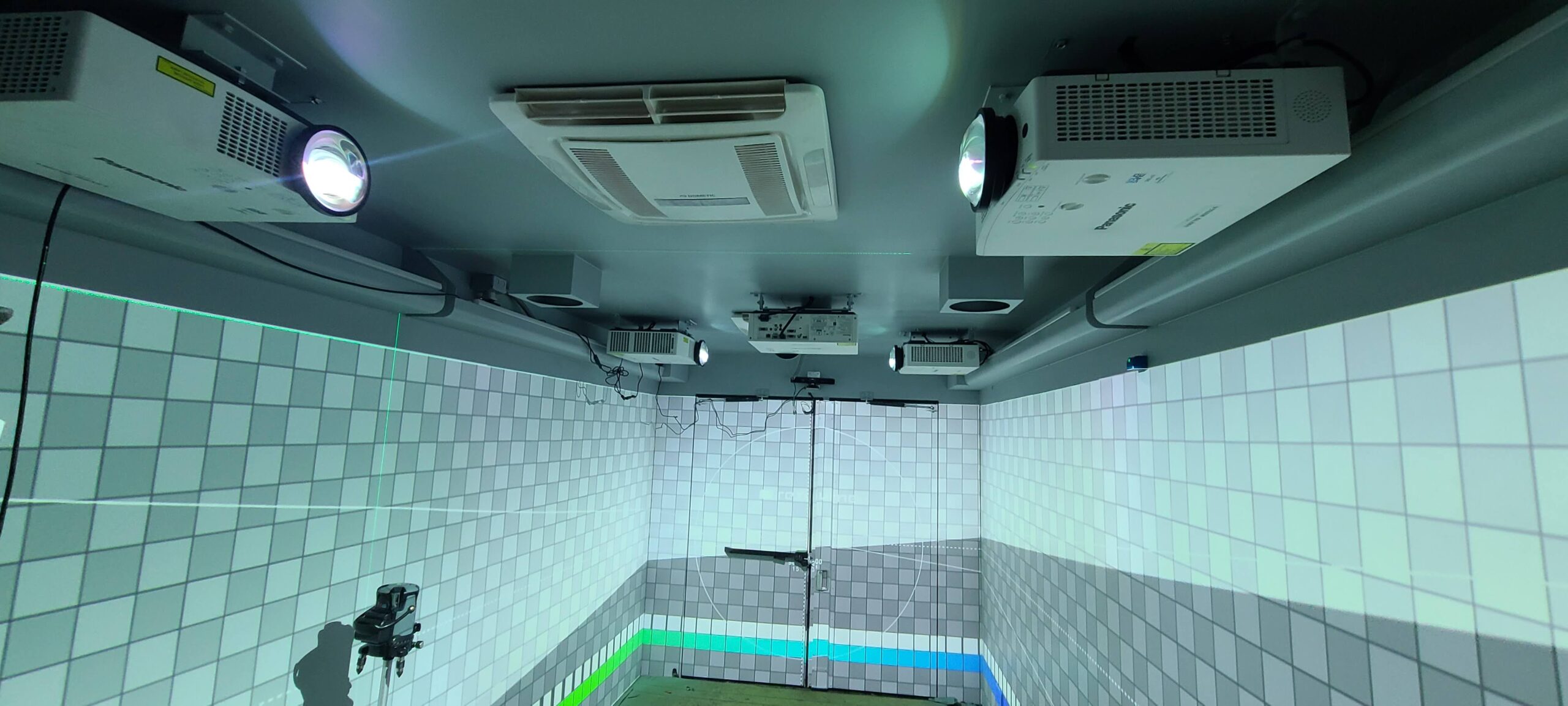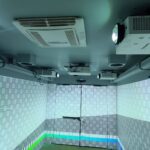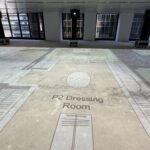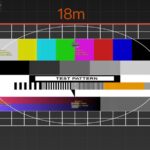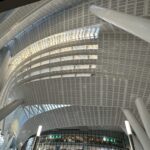Introduction to Projector Fixed Installation
Projector fixed installation projects play a crucial role in enhancing visual experiences across various environments. These projects are designed to ensure that laser projectors are securely mounted and configured for optimal performance, catering to a diverse range of applications, including corporate settings, educational institutions, entertainment venues, and public spaces. The primary purpose of a fixed installation is to provide a reliable and consistent visual display that meets the specific needs of its users, allowing for seamless presentations, immersive experiences, and effective communication.

The benefits of a well-executed projector fixed installation are numerous. One of the most significant advantages includes the ability to deliver high-quality visuals with precise color accuracy and clarity, which is essential for conveying information effectively. Additionally, fixed installations contribute to a more aesthetically pleasing environment by eliminating clutter and enhancing the overall design with strategically positioned projectors. Properly installed systems also minimize maintenance requirements and often have a longer lifespan, leading to reduced operational costs.
When embarking on a projector fixed installation project, several key considerations must be taken into account. First and foremost, selecting the right projector is critical, as different models offer varying features, brightness levels, and resolutions. This choice directly impacts the quality of the visuals produced. Furthermore, factors such as room size, lighting conditions, and the intended use of the projector must be carefully evaluated to ensure that the installation aligns with the specific requirements of the environment.
Moreover, the installation process itself should be conducted by experienced professionals who understand the technical nuances of projector alignment, connectivity options, and screen selection. By focusing on these aspects, organizations can achieve an effective fixed installation that not only enhances visual experiences but also ensures reliability and efficiency for years to come.
Understanding Laser Projectors
Laser projectors are increasingly becoming the preferred technology for various visual display needs, particularly in fixed installation and splicing projects. Unlike traditional lamp-based projectors that utilize incandescent bulbs to produce light, laser projectors leverage laser diodes as their light source. This fundamental difference results in a number of benefits that make laser projectors advantageous in numerous settings.
One of the primary advantages of laser projectors is their longevity. While conventional projectors typically have a lamp life of around 2,000 to 5,000 hours, laser projectors can operate for up to 20,000 hours or more without significant degradation in performance. This extended lifespan translates to lower maintenance costs, as users are less frequently required to replace light sources. Moreover, the reduced need for replacements minimizes downtime in critical environments where continuous operation is essential.
Energy efficiency is another salient feature of laser projectors. They consume significantly less power compared to their lamp-based counterparts. This efficient energy usage not only leads to cost savings for users but also contributes to reduced heat generation, which can be particularly beneficial in tight spaces or environments that require careful temperature management. As a result, laser projectors are often favored in venues such as concert halls, theaters, and corporate settings.
Furthermore, laser projectors excel in color accuracy and brightness. They can produce a wider color gamut, enabling vibrant visuals that maintain clarity even in well-lit environments. This superior color performance allows visual content to captivate audiences effectively, making laser projectors a preferred choice for installations that aim to create immersive experiences.
In summary, the advancements in laser projection technology, characterized by their longevity, energy efficiency, and enhanced color accuracy, make them a compelling option for a variety of applications, particularly in situations where high-quality visual output is paramount.
Planning Your Installation Project
Effective planning is crucial for the success of any fixed installation project involving laser projectors. It begins with a comprehensive site assessment, which allows for a thorough understanding of the space in which the projector will be installed. Evaluating the dimensions, layout, and characteristics of the environment is essential for determining the optimal placement of the projector. Factors such as distance from the screen, potential obstructions, and viewing angles must be taken into account to ensure the best possible visual experience.
Determining the ideal projector placement is a critical element of the planning phase. This determination should involve calculating the throw distance, which is the distance required for the projector to produce a clear image at a specific screen size. Additionally, considerations regarding the projector’s mounting height should be made to avoid image distortion and achieve a suitable aspect ratio. Special attention should also be given to maintaining the projector’s cooling requirements and minimizing the risk of overheating.
Another vital element to consider during the planning phase is screen selection. The choice of screen material and size greatly influences image quality and overall projection effectiveness. Factors such as gain, viewing angles, and ambient light reflection must be examined to select a screen that complements the characteristics of the projector while satisfying the specific needs of the installation environment.
Besides visual elements, addressing the acoustic and lighting conditions in the space is instrumental in optimizing the viewer’s experience. Assessing the ambient light levels will prompt considerations for screen types that mitigate reflections. Similarly, evaluating sound quality and incorporating appropriate acoustic treatments can enhance the overall clarity of audio during presentations, making it even more imperative to plan thoughtfully. By meticulously planning these essential aspects, one ensures a successful and efficient laser projector installation project.
The Importance of Splicing in Large Display Setups
Splicing in the context of projector installations refers to the technique of seamlessly integrating multiple projectors or screens to create a unified visual experience. This process is particularly crucial for large display setups, such as those found in conference rooms, events, and public presentations. When projecting content across several surfaces, it is essential that the images align perfectly to avoid any disruption in the viewing experience, which can detract from the intended message.
One of the primary reasons why splicing is important in large display setups is that it allows for a consistent and cohesive presentation of visual content. When projectors are strategically placed and calibrated properly, they can project a continuous image that appears as a single entity, rather than a disjointed collection of separate images. This harmonious projection is achieved through a combination of hardware and software configurations, which works to blend the edges of overlapping images. The technical intricacies include color correction, edge blending, and distortion compensation, all of which play a vital role in ensuring a flawless visual output.
When planning a large display setup, it is critical to consider the distance between projectors, the type of surface on which images will be projected, and the ambient lighting conditions of the environment. Each of these factors can significantly impact the effectiveness of the splicing process. Proper alignment and calibration must be performed to enable projectors to work in tandem, especially when the visuals are intended to convey intricate details or perform in high-stakes environments. In addition, advanced projection mapping techniques may be employed to enhance the overall impact and fluidity of the display.
In conclusion, splicing is an essential element in achieving an impressive large display setup that captivates viewers and effectively conveys the desired message. By understanding the technical underpinnings and critical considerations involved in splicing, professionals can significantly improve the quality and impact of their visual presentations.
Technical Requirements for Splicing Projects
Successful splicing projects for laser projectors hinge on several critical technical specifications and equipment considerations. At the forefront is the need for advanced processing hardware capable of handling complex image processing tasks. This hardware is essential for ensuring seamless integration of multiple image feeds, which is central to the splicing process. It typically involves high-performance multi-channel processors designed to synchronize and merge images with precision, creating a unified visual output that meets professional standards.
Moreover, specialized software tailored for image alignment and adjustment plays a significant role in the optimization of visual experiences. This software allows operators to finely tune various parameters such as brightness, contrast, and color matching, effectively calibrating each projected image to achieve a coherent and captivating display. The ability to manipulate these settings is particularly vital when dealing with multiple projectors, as even slight discrepancies can undermine the overall visual integrity.
Furthermore, the choice of high-quality cables and connectors cannot be overlooked in any splicing project. These components are crucial in maintaining signal integrity and ensuring high-definition image quality. It is recommended to use top-tier fiber optic cables for long-distance transmission, as they provide minimal signal degradation and superior reliability. Additionally, employing robust connectors that prevent signal loss is imperative for transmitting high-bandwidth content seamlessly. Ensuring these components meet the specifications required for high-resolution signals is essential for the success of the splicing initiative.
In summary, achieving successful splicing projects for laser projectors relies heavily on robust processing hardware, sophisticated software for image management, and the use of premium quality cables and connectors. Together, these elements create a foundation for a coherent and visually impactful installation that meets the demands of both installers and audiences alike.
Installation Process for Fixed Projectors
The installation of fixed projectors is a critical step that significantly influences the quality and effectiveness of visual displays. A systematic approach to this process can ensure optimal performance. First, selecting the ideal mounting location is crucial. This site should be free from obstructions and ideally positioned for the intended viewing audience. Once selected, the mounting bracket must be securely fastened to a ceiling or wall, ensuring it adheres to the appropriate weight specifications of the projector.
Next, it is essential to configure the projector settings. This step involves connecting the projector to a power source and any necessary external devices such as laptops or media players. In this phase, users should take care to match the input sources properly and make sure that all necessary cables—HDMI, VGA, or audio cables—are neatly installed to prevent any interference during the presentation. Depending on the complexity of the installation, it might be beneficial to utilize a cable management system to enhance aesthetics and safety.
Once the connections are established, attention should turn to aligning the image. Orientation is paramount; the image should be projected straight onto the screen without any keystoning or distortion. This can typically be achieved using the projector’s built-in alignment tools, which assist in adjusting the vertical and horizontal angles. Fine-tuning these adjustments may require some trial and error to pinpoint the perfect angle for clarity and quality.
Finally, comprehensive testing is indispensable. This testing phase should include running thorough checks on the image quality and sound output to ensure everything operates as intended. Any issues identified during testing should be addressed promptly to guarantee the projector delivers an optimal visual experience. Each step in this installation process contributes to delivering a compelling and impactful presentation, enhancing the overall effectiveness of the fixed installation project.
Implementing Laser Projector Splicing
Implementing a splicing project with laser projectors requires a methodical approach to ensure optimal visual experiences. The first step involves the calibration of each projector, which is critical for achieving accurate brightness, color consistency, and alignment across the display. This can typically be achieved through the projector’s built-in calibration tools or by using specialized software suites designed for this purpose. It is essential to ensure that all projectors are set to the same color temperature and intensity levels to create a seamless image output.
Following calibration, the next crucial step is the blending of images from multiple projectors. This process often utilizes edge blending techniques, where the overlapping sections of images from adjacent projectors are merged. Advanced software tools can assist in this process, allowing for adjustments in brightness and color to ensure that the blended edges are imperceptible. Utilizing a projector with a wide dynamic range can enhance the blending quality, making transitions between images smoother. Careful attention must be afforded to overlapping areas; improper blending may result in harsh lines or noticeable discrepancies between images.
Furthermore, effective management of multiple inputs and outputs necessitates the use of robust software platforms designed for visual display management. This software should support real-time adjustments and facilitate seamless integration of various media formats, ensuring that any content can be displayed without issues. Quality control checks during the implementation process are vital to address any calibration or blending discrepancies early on. Overall, a well-planned execution of these steps will lead to a professional-grade installation, enhancing the audience’s visual experience and achieving the intended impact of the display.
Troubleshooting Common Issues
During the process of fixed installation and splicing of laser projectors, various challenges may arise that could compromise the visual experience. One prevalent issue encountered is image distortion, which can occur due to several factors. First, check the alignment of the projector. Misalignment can lead to skewed images. Ensure that both the projector and the screen are configured correctly, maintaining the appropriate angles. Furthermore, if the projector’s lens is dirty or obstructed, it can affect the image quality; regular maintenance and cleaning are advised to mitigate this issue.
Another common challenge faced during installation is color inconsistencies. Variations in color can arise from improper calibration, differences in projector models, or discrepancies in source materials. To address this, it is essential to conduct thorough color calibration using a colorimeter or built-in calibration tools provided by the projector. This step ensures that the colors projected align accurately with the intended output. Additionally, verify the settings of the video source to confirm that they support the desired color output range and are compatible with the projectors in use.
Connectivity issues can also pose significant headaches during the setup and splicing processes. Problems may include signal loss, delayed projection, or outright failure to communicate between devices. To troubleshoot, examine all cables and connections for damages or loose ends. Utilizing high-quality cables that meet the required specifications will enhance data transmission reliability. Additionally, ensure that all devices are updated with the latest firmware to address any software compatibility problems. By taking these steps, installation teams can efficiently resolve common issues and enhance the overall functionality of laser projectors in fixed installation scenarios.
Conclusion and Future Trends in Projection Technology
Throughout this blog post, we have explored the critical aspects of optimizing visual experiences through fixed installation and splicing projects for laser projectors. The importance of precise calibration, careful selection of components, and integration with surrounding technologies cannot be understated. Considerations such as lumens, color accuracy, and installation environments play an essential role in achieving high-quality projections that effectively capture audiences’ attention across diverse settings, from corporate environments to entertainment venues.
As we look to the future of projection technology, several trends are emerging that hold significant promise for further enhancing operational efficiency and visual experiences. One notable trend is the continuous improvement of laser projector technology. The move toward more energy-efficient models that provide superior brightness and contrast ratios is crucial for industries requiring high-performance visual solutions. Enhanced light sources, including advancements in multi-color laser systems, are expected to deliver richer, more vibrant imagery, thereby maintaining perception even in challenging lighting conditions.
Moreover, the techniques used for installation are evolving. Innovations in hardware design and installation methods are simplifying the integration of laser projectors into existing environments, minimizing downtime, and maximizing usability. The introduction of automated calibration tools is set to reduce human error and streamline setup procedures significantly, making installations more reliable and cost-effective.
Additionally, the rise of immersive experiences, including augmented and virtual reality, is driving demand for enhanced projection capabilities. Industries such as education, healthcare, and entertainment are increasingly leveraging these technologies, leading to new opportunities and applications. In summary, the future of projection technology appears promising, fueled by continuous advancements in laser projectors and installation strategies that will change how we perceive visual storytelling.

